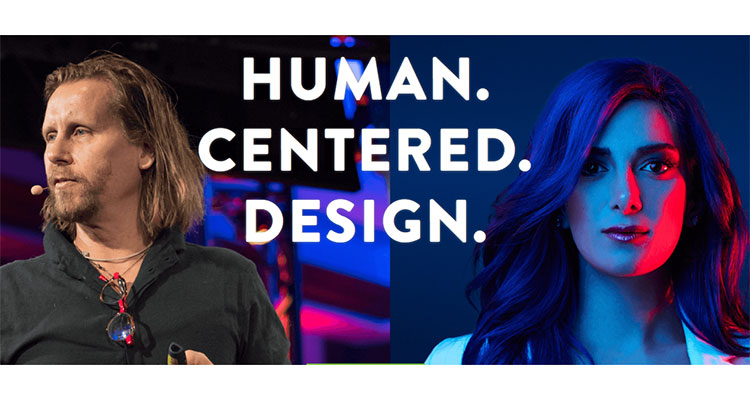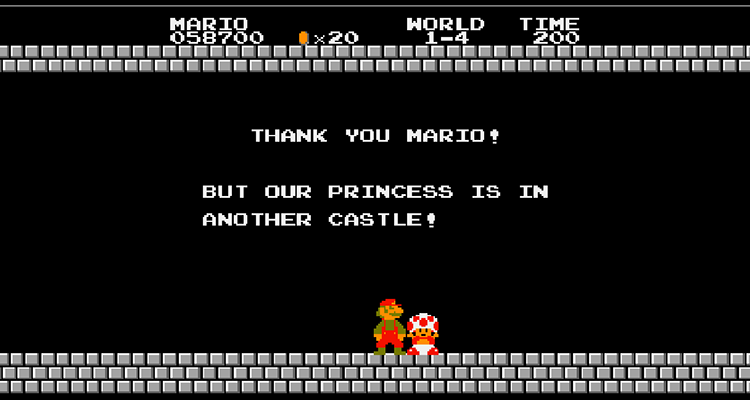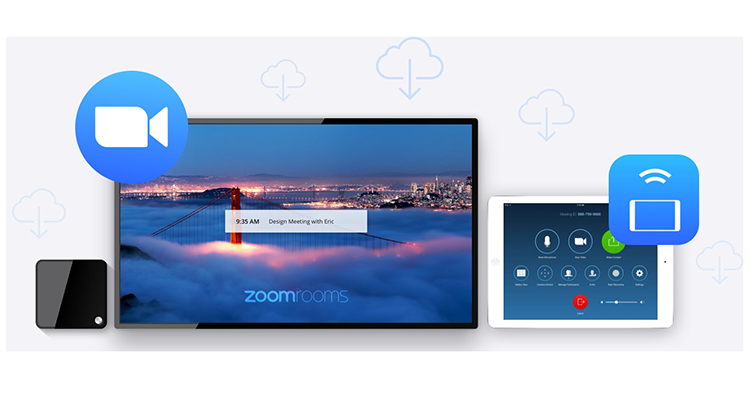The TIDE Conference and Learning how to Think
 Another InfoComm is now behind us. As we return to our everyday lives, we should look back and reflect on what we learned and experienced over the past week. For those of you who weren’t able to attend, this is a chance to share some of the lessons I found across the country in Las Vegas. Another day we will, perhaps, discuss some products or specifics. Today I’d like to start the day before the opening of the show floor with the TIDE Conference, and with what is the most important thing we can gain anywhere — learning how to think.
Another InfoComm is now behind us. As we return to our everyday lives, we should look back and reflect on what we learned and experienced over the past week. For those of you who weren’t able to attend, this is a chance to share some of the lessons I found across the country in Las Vegas. Another day we will, perhaps, discuss some products or specifics. Today I’d like to start the day before the opening of the show floor with the TIDE Conference, and with what is the most important thing we can gain anywhere — learning how to think.
InfoComm 2018 marks the third TIDE Conference, with the first two having taken place in ISE and InfoComm 2017 last year. What is TIDE? First, and most simply, the the name is an acronym for Technology, Innovation, Design and Experience. The conference is a full-day series of lectures, workshops and breakout sessions about the role of technology in our worlds, the nature of design, and foundational ideas on how to think about our work and how we should think about it. If you came to TIDE expecting AV content directly applicable to the design of, say, a classroom or a conference room you’d be disappointed. If you came to open your mind to new ways of thinking and to hear the words of smart and creative speakers you’d be very pleased and impressed indeed. This was a special day, one in which speakers and audience would cite a dizzying array of sources from statistics on cell phone usage to Homer Simpson to Homer’s Odyssey. If you can attend one of these in the future, you should.
 The conference started with a brief multimedia preamble played across the two projection screens set up in front of the room; after an abstract sound and image the audio went silent and a set of words appeared across the display, identifying itself as your inner voice and speaking of the day’s possibilities. We would later learn that this was the work of Ben Moorsom of Debut Group, and a technique he refers to as “neuroscaping.” The idea was to create a unified state of mind in the room through carefully chosen words and images. When the audience reads, “I am you — your inner voice,” on the screen, we start to hear our own voice in our heads. Neuroscaping would be the topic of one of the breakout sessions which, sadly, I did not attend. That’s my biggest complaint: All of the breakouts sounded quite compelling, but we could only choose one for each of the two breakout periods. More on that later.
The conference started with a brief multimedia preamble played across the two projection screens set up in front of the room; after an abstract sound and image the audio went silent and a set of words appeared across the display, identifying itself as your inner voice and speaking of the day’s possibilities. We would later learn that this was the work of Ben Moorsom of Debut Group, and a technique he refers to as “neuroscaping.” The idea was to create a unified state of mind in the room through carefully chosen words and images. When the audience reads, “I am you — your inner voice,” on the screen, we start to hear our own voice in our heads. Neuroscaping would be the topic of one of the breakout sessions which, sadly, I did not attend. That’s my biggest complaint: All of the breakouts sounded quite compelling, but we could only choose one for each of the two breakout periods. More on that later.
The host, Kevin Jackson of The Experience is the Marketing, then spoke to us about experience and events, what lead him to the event industry and went on to introduce a fascinating array of presenters. One thought from Mr. Jackson’s introductory keynote stands out to me: He described the “needs” of an event as a hierarchy, with the venue as the base, followed upward by production, content, networking and, at the pinnacle, inspiration. His lament was that we spend a great deal of time and energy at the base of the pyramid – finding and preparing a venue, solving technical challenges, etc. — and lose sight of the ultimate goal in whatever inspiration we want our event to spark. So too often it is with AV. We get very much engaged with cable and conduit, with signal flow and control surfaces, with loudspeakers and microphones. We become so adept at asking, “How?” that we often forget to ask “Why?” This is, perhaps, the biggest problem in our industry
Of the presenters, a few stood out to me. One was Beau Lotto, neuroscientist and author of How to Deviate, on the nature of perception. His stated goal — to have us leave his talk knowing less than we thought we knew at the beginning — was the kind of provocative statement aimed right at our sense of wonder. He went on, through discussion of illusions and common perception errors, to explain that we do not see the world. We see a perception of the world based on our personal, cultural, and even evolutionary history. This is something of which I was reminded much later in the week when discussion creativity with an InfoComm attendee from Peru, who had different cultural expectations than mine as to, in this case, the shape of a house.
A tree falling in the woods when nobody is there, Lotto told us, does not make a sound. It releases energy, but that energy only has meaning as “sound” if someone’s brain is there to filter it through our biases and assumptions.
I can hear you saying that this is fascinating, but not directly applicable to what we do.
Perhaps not. But part of the point Lotto was driving toward is the nature of creativity: that being able to see and think about things creatively is a matter of expanding your sphere of possible solutions by first recognizing your biases and assumptions and then asking the right questions to help change them. He spoke of diversity in this realm, and about how while an expert will often be efficient, a novice will often drive creativity. Novices ask good questions because they aren’t bound by biases; experts can recognize these as good questions because they understand the context.
That’s just one standout session of many. Digital artist, thinker and technologist Rana June (of Lightwave) gave a wide-ranging talk on emotion, the nature of art, the promises and dangers of AI and more. This is a woman so thoughtful that even her hair color has a message (her hair is colored blue, as a reminder that language creates perception. It is very likely that the concept of “blue” – and therefore, in a very real sense, the color – did not exist at all in most cultures until modern times. She colors her hair blue to in part remind us that our perceptions and language shift our reality.) Getting to hear from June was a highlight of the event, as she showed herself well-versed in both practical and artistic applications of the new science of measuring both human activity and emotional response. At the very end of the conference she even presented a unique piece of digital art, commissioned by AVISA: an image formed from data gathered by sensors placed throughout the room to measure sound throughout the day.
June is also cognizant of the risks in technology, from privacy concerns (she herself never collects personally-identifiable data) to the danger of our worst online behavior becoming the teaching set for future generations of AIs. For an overall very positive and hopeful conference there were measures of caution, both from June and from the morning’s last presenter Steven Braitch of Fjord. Braitch spoke soberly about the marginal improvements tech is able to realize in the lives of very wealthy people while those with less advantages remain less advantageous. It was a serious and somewhat down note on which to end the first half of the day.
There was, of course, much more.
We heard from Rebecca Destello of Facebook on Human Centered Design – essentially design-thinking exercises focused on user experience. Amar Bakshi spoke about the inspirations behind and actuality of the Shared Studios “Portals” project. Danielle Lynsey-Chung of Uber spoke of how a digital/physical hybrid company creates shared experiences, for both users and drivers (there is much to say about the impact of Uber on urban planning, but that’s a discussion for another time and, quite likely, another venue). I attended a breakout session in which Arup and BBI Engineering discussed in detail how they used human-centered design-thinking techniques to create a unique system for Lighthouse for the Blind in San Francisco, using various iterations of prototypes to create a control surface accessible to the visually impaired. Etc, etc.
Several threads wove through the day: the importance of perception, the value of questioning our assumptions and the design-think process of listening, adjusting, experimenting, listening again.
It was a day from which one walks away perhaps without answers, but with a better appreciation of what it takes to ask good questions.
As Beau Lotto said toward the beginning, I now know less than I thought I did at the beginning. In that it was a success.




